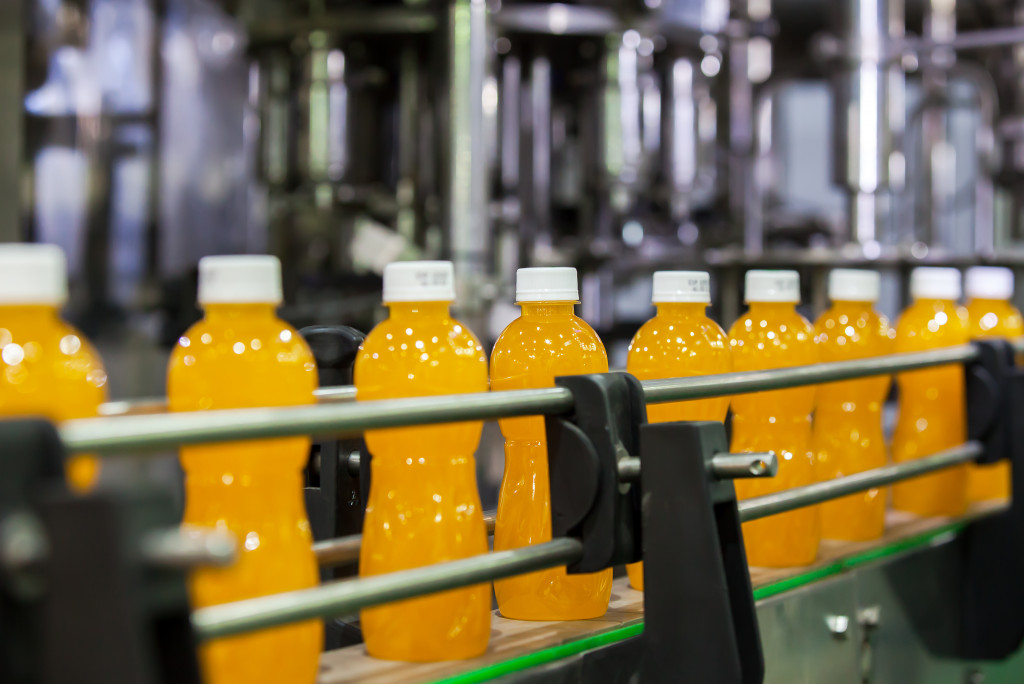With a predicted annual 3.17% increase in its market value, juice manufacturing is a massive industry that many entrepreneurs consider in their portfolios. As more health-conscious individuals prefer to purchase fresh juices, this prediction is unlikely to go sour. Likewise, bottled drinks have always been advertised as on-the-go refreshments for busy employees who still need to get their daily allowance of vitamins. This means that there will always be a market for cold and nutrient-rich, non-alcoholic beverages.
Although it is difficult to get shelf space in any establishment, it is not surprising that investors want to take a sip of some money-making juice. The market may be oversaturated, but there will always be an exotic superfruit that people will be interested in trying. Furthermore, the convenience in the placement of the product on display can cause intrigue and direct consumers’ attention. So, no matter how much the margins are cut by supermarkets and grocery stores, the investment is still worth it for any entrepreneur.
However, the industry is facing challenges as the demand for more exotic fruit rises. This is due to the irregularity in the shapes of the produce and the difficulty in removing toxic seeds. The rarity of the fruit is also another issue, with off-season harvests becoming scarce unless companies decide to farm their own. Finally, with exotic fruits, there is very little research regarding their extraction and durability of pure fruit juices. This creates another obstacle for manufacturers to invest in, making it even costlier to set up a production.
Automation Of Peeling, Deseeding, And Decoring
At the moment, the machines for peeling, deseeding, and decoring are specific to fruits commonly processed. This means that there are already pulpers for apples, oranges, mangoes, pineapples, and the like. No machine can handle all three processes for all fruits for the time being. Even though juicers are available, removing the toxic seeds from produce such as soursop still has to be done manually.
There needs to be more innovation in juice manufacturing for machines that can accommodate uncommon fruits. This means that a research and development group will have to spearhead tests and runs, advancing through all the levels of technology readiness before the machine is used in a factory. Along with a food-grade transfer pump to facilitate the movement of the produce and its juice, this is the only way to ensure that the production goes as fast and as sanitary as possible.

Off-Season Harvests
Since not all fruits are grown year-round, the off-season harvests often dent the productive capacity of a manufacturing plant. This results in unsuspected drops of raw material to be processed, affecting the earnings for that particular season. Even though this can be mitigated by storing raw fruit in the cold storage to prepare, but this contingency plan will need additional funds.
Similarly, there can be a rise in the capital required during bountiful harvests of the raw material. The higher the productive capacity, the higher the overall operational costs of the factory. On the bright side, companies can make the most profit as produce will usually be sold at a lower price compared to other times of the year.
Expiration Dates
As mentioned earlier, deciding on the expiration date of the fresh fruit juice can be challenging, especially for exotic sources. There will be limited research and testing, requiring entrepreneurs to invest in figuring out the safe limit of the product. Factors such as pasteurization time, storage, enzymatic deactivation, and packaging can all play a role in prolonging the shelf-life of fresh juices.
Lastly, even when the researchers finally determine the product’s expiration date, the quality control and quality assurance staff must be able to set the parameters for bottles that might have gone stale or did not meet the standards set by the company. If the juice has already left the factory premises, an immediate recall must be performed by the quality assurance team. This will take a great logistic effort by the business, possibly costing the owner a great deal of their profit, if any.
Although there is a promise of being part of a multi-million dollar industry, juice manufacturing can be difficult if there is little research for innovators to work with. The benchmark and laboratory tests can cost entrepreneurs a great deal should they decide to pursue the trends of exotic fruits among current consumers.




